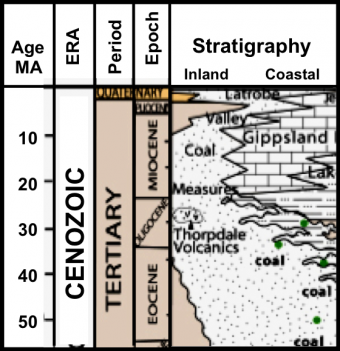We model and compare the volume of oil and gas generated within the fetch area of a trap with trap volume. We can use seismic data to increase our confidence that HCs are present and, perhaps, how much HC volume is present in the trap. We look for and use direct hydrocarbon indicators (DHIs), which are anomolous seismic responses that are caused by the presence of hydrocarbons and/or display characteristics that are consistent with hydrocarbons filling pores in a rock matrix.
At the end of this lesson, the student should be able to:

This short course takes a brief look at what happens in the early stages of field exploration in the petroleum industry. The Gippsland Basin, offshore Australia, is the field example, and we start with a look prior to the first offshore licensing round of the field. Throughout the course, we will progress to the stage of management review of a wildcat well.